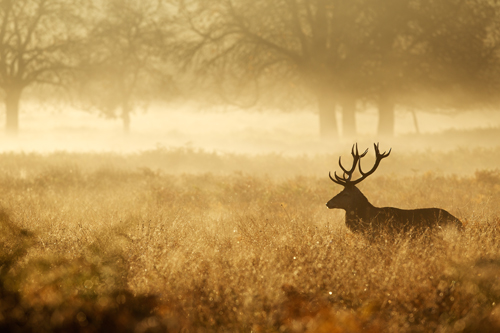|
Though temperatures can fall below freezing and weather conditions are often more extreme, the late season is still a great time for a deer hunt. In fact, there are some unique advantages that come along with the changing weather and the changing behaviour of the deer following the rut. Here is a look at three main tactics that can help you take advantage of the ways deer leave themselves exposed during this time of year.
1. Identify Food Sources
In the late season, the main priorities of a buck are to eat as much as possible while conserving as much energy as possible. They will need to gain back all of the energy and weight expended for breeding in preparation for the winter months ahead, which means they will largely restrict their movements to between bedding areas and food sources.
If you are hunting in an agricultural area, then your best bet for find deer will be at remnant crops of corn or soybeans as well as winter cover crops like rye or wheat. In the forest, you’ll want to look for flats covered in a mast crop such as acorns.
Trail cameras are a great tool for identifying potential feeding areas. Once you’ve found a good food source, your chances of a successful hunt will go way up.

2. Time Your Hunt Right
By the late season, deer have already been hunted for several months and are hyper-vigilant to the presence of humans. Choosing the right times to hunt will be much more effective than camping out at a spot and hoping a buck walks by, even if it is near a food source.
Your decision for when to go out should be mainly based on the time of day. Broadly speaking, the early morning hours are not likely to be fruitful. It’s better to wait until the late afternoon, when temperatures have reached their peak. If the day is unseasonably warm, then an early afternoon hunt can be a good option as well.
Deer also tend to be more active before and after big swings in the weather or barometric pressure.
3. Track Your Trophy
Hunting in the late season means you will likely be able to take advantage of tracks in the snow. If you find a deer track that is about three and a half inches long and across, then chances are that it was made by a mature buck. Longer stride distance and greater track depth in the snow can also indicate a larger and more mature animal.
The best thing about finding tracks is that you know there is a deer at the end of them, you just need to catch up. Even if it looks like the track might have been made the night before, the deer could be bedded down nearby.
By adjusting your tactics in accordance with changing deer behaviour post-rut, you can enjoy great success when hunting during the late season. Increase your chances of ending the season on a high note by taking the time to identify food sources, being smart about when you head out, and learning how to track.
|